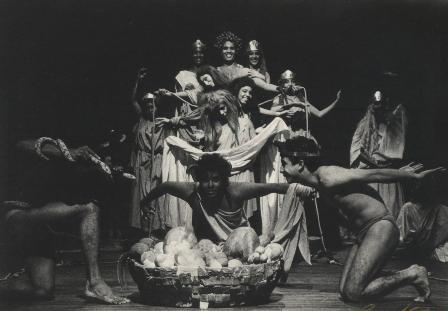Photography in Cuba
Dariela Aquique

Photographers go about inquiring into the detail, that which is in all things, even in the most basic. Sometimes they refer to or capture in their photos a story to be told.
In this way the most ephemeral is perpetuated, thus fulfilling the old adage about creation as a human act that becomes art that disturbs in its epoch and becomes memory and testimony.
Taking pictures is a serious profession for some, while for others it’s a hobby or a simple livelihood. But in any of these variants it’s an activity that isn’t cheap. In many parts of the world the art of photography is for a minority of people, obviously due to economic reasons.
However, many Cubans have dedicated themselves to this. Despite the lack of resources but thanks to innovative technologies they have achieved works of great mastery.

Motivation plays a key role here. What caught my attention recently was a personal exhibition at the gallery of the Centro Prat Puig here in Santiago de Cuba. Its title was “Pa’ mi pueblo” (Fo’ My People).
It owed its name to a photo that displayed graffiti on a wall reading “Fo my people,” and just below those words were piles of garbage. Images like these express what could have all types of reasons, or none that are accurate or none that are apparent, but that’s how they fulfill their role.
The exhibition as a whole wasn’t anything new, however what were unique were the techniques used, which were well exploited. Yet in this work was a stamp of authenticity that identified it. It managed to draw from the most common things its poetic breath, its magical flight, its sense that at times was even dreamlike.
It was well received, reflecting the simplicity of people, the truth of a nation shown through photos of a pair of worn out sneakers hanging from a line and drying in the sun, or a paper boat in the sea, an old piece of furniture on the roof of a house, or the shabby faces of common men, women and children that reflected total desolation.
Cuban photography after 1959 I could call completely epic. It displayed scenes from the sugarcane harvest, the literacy campaign, the great leaders of the revolution. All this was captured by the lens of those who like the famous Alberto Korda made a career recording this stage in the life of the nation.
By the 1980s photos in Cuba had no great deeds or icons to reveal, for this reason it took on a more commercial character. The most serious work done was photographing artistic events, while the most common was to do cheesy montages for weddings and quinceaneras (little girls’ “sweet fifteen parties).

Trying to collect pictures of the mass exoduses or any other social incident was only permissible for the press corps or official photographers. Censorship wouldn’t allow people to do this on their own.
In these times of technical advances and access to certain forms of media by many people, stringent control is becoming increasingly impossible. Anyone can catch a scene in their lens that inadvertently involves a complaint or a critique.
However, certain problems can occur for you when taking a picture, let’s say a compromising one.
But today every seemingly innocent and simple picture has its own life. Its speech is so powerful in itself. The figure is there, posing its challenge by imploring “Look at me!” This is photography in Cuba today.





